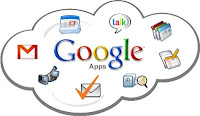Good Question. The answer is - It all Depends! Some research supports accelerated watching/listening. Some research found that students do poorly on tests after watching/listening to videos 2x times the regular speed. The problem with these studies is that they approach it as an either/or situation. They have students listen to content at 2x and then test them.
Success with this process is a personal outcome. It depends upon:
- Content of the video/audio.
- Your ability to understand the audio language.
- How much attention you are paying to the audio track.
People typically speak English at about 150 words per minute (wpm). (I would assume that this applies to other languages as well, but I didn't find any research on that.) Our maximum rate for comprehension is about 450 wpm. This means that we might be able to triple (3x) the speed of discourse and still understand it.
What Will Work for You?
I must admit that I usually keep my listening at a 1.5x or 1.75x rate. I have tried 2x but don't find that comfortable. Your choice must be based upon what works for you . . . but what is that magic speed?
The Oxford Online English center suggests a short test to identify which speed works best for you.
Oxford Online English - How to Understand Fast Speech.
Begin by finding an audio track (maybe on a video) containing the type of information you typically need to learn. Wouldn't make sense to listen to a highly-technical medical video if you will be listening to lectures for typical education videos. It will work best if you have a transcript of the piece, but not necessary.
- Warm up by listening to a few sentences in the video. Try to remember what they said.
- Listen to another sentence.
- Try to type/write out the sentence exactly.
- Repeat this for 2 more sentences.
- Compare what you typed/wrote to the transcript (or listen to it again.)
- How many mistakes did you make? Every missing, wrong, or forgotten word is a mistake.
- You are only allowed 1 mistake. Any more, then you need to slow down your speed and try again.
- If you got them all right, try it again at a faster speed. Continue until you find the speed you want to use.
Pay Attention!
Watching/Listening Faster
Watching faster can mean a big difference in how much you can learn in a short period. This can be a great boon to your students' learning as well. Chances are that many of them are doing this already, but they may think it is cheating. Let them in on this secret. Try doing it in class so they can see how it works.
Introduce your students (and yourself) to another way in which you can understand the world.
Have you been speeding up your watching/listening? Leave a comment about what you have accomplished.
Z
BTW, Speeding up podcasts to make listening more efficient is called PodFasting. It's a great way to catch up on the podcasts that you missed. Check it out.
Inouye, M. (2016) Can We Speed Listen and Still Understand?









